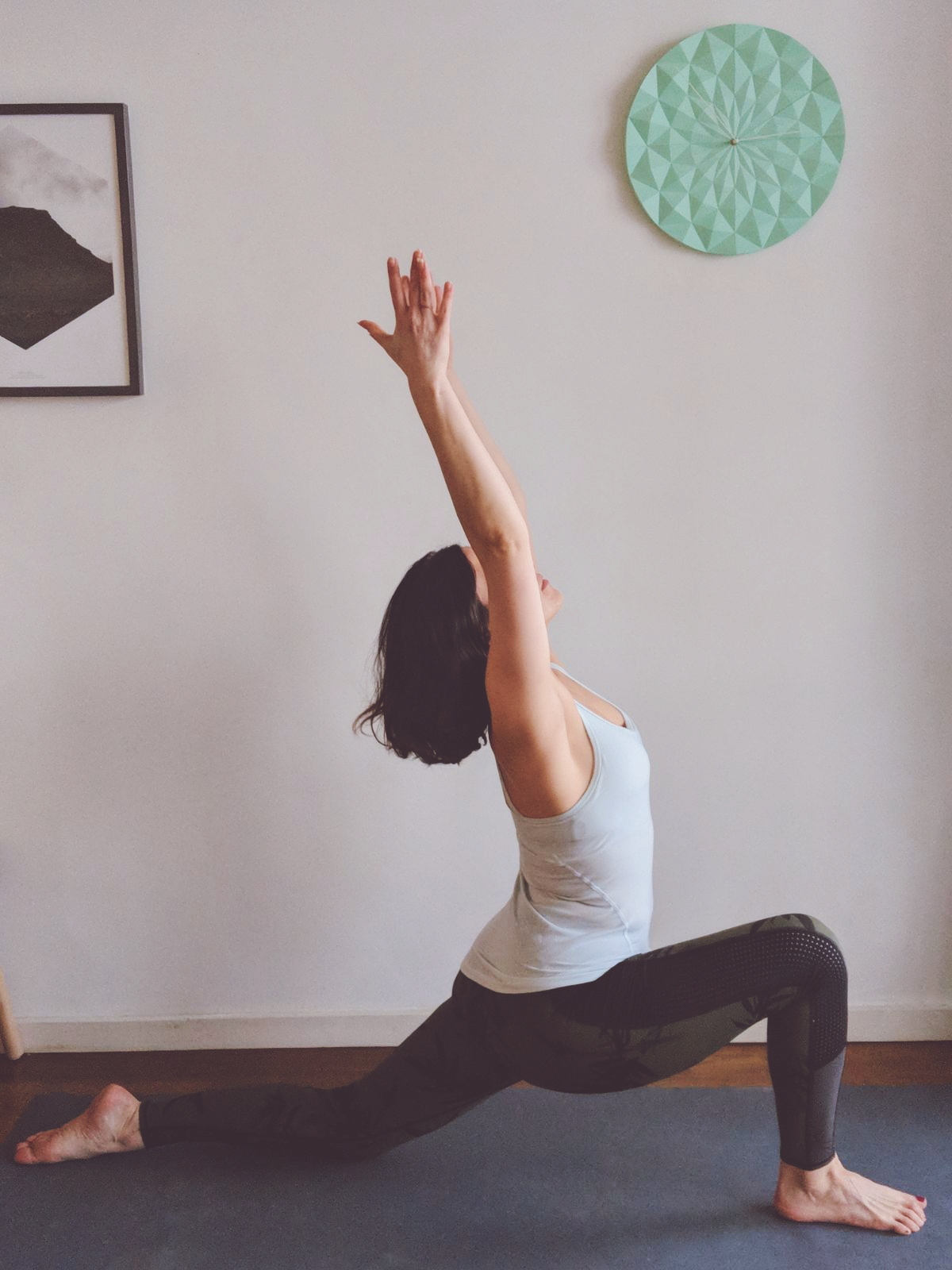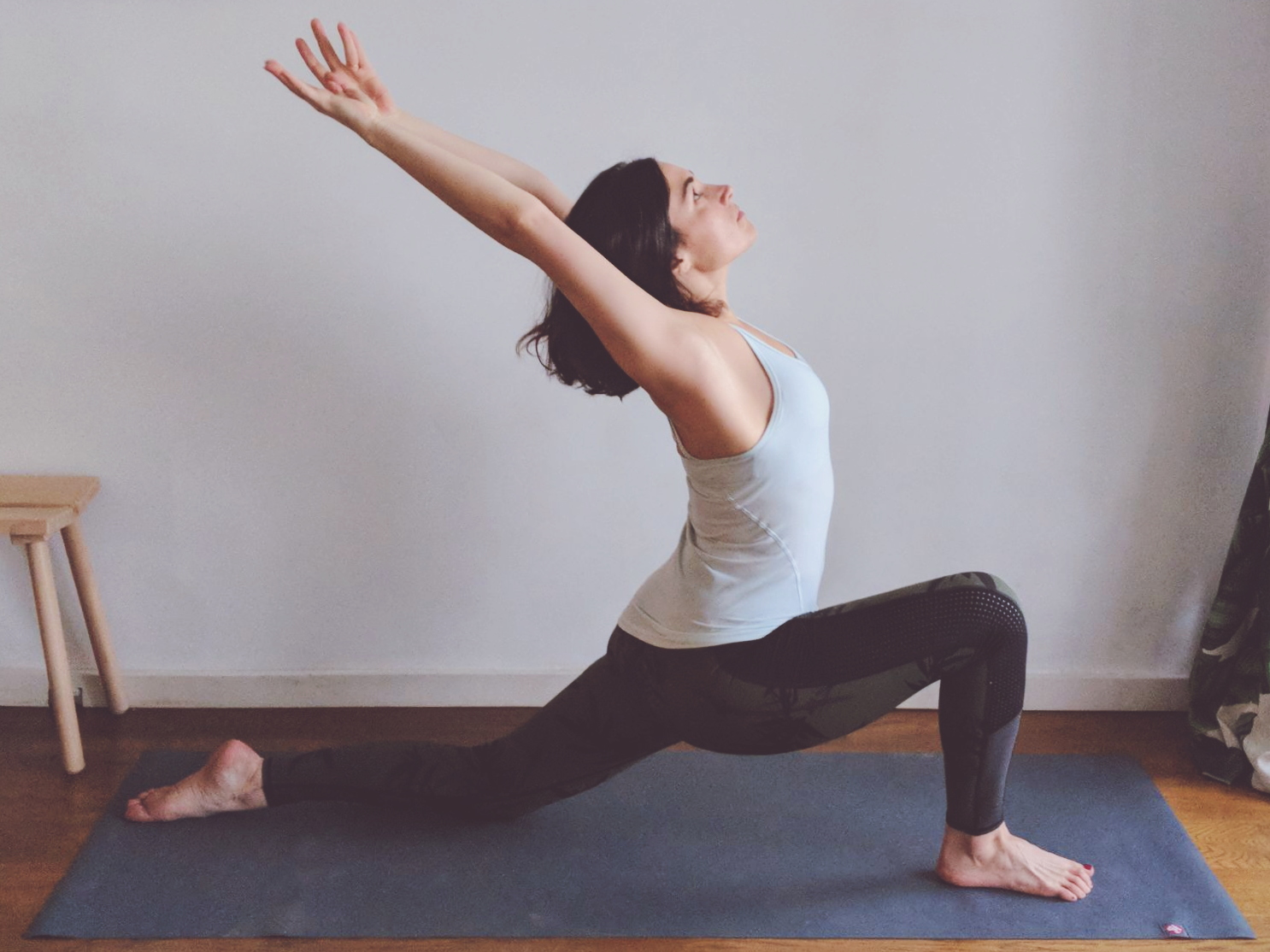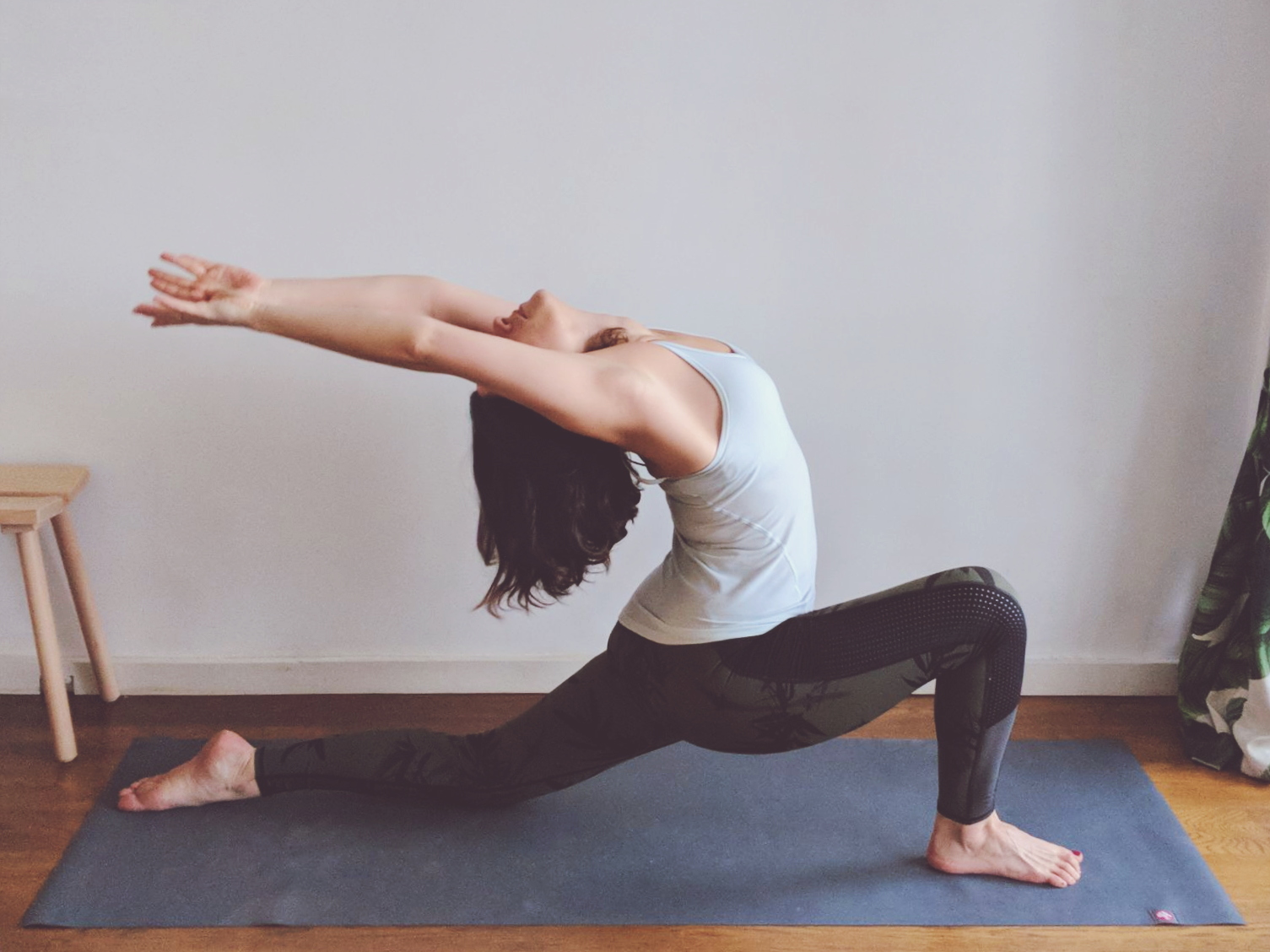Anjaneyasana
One of my yoga teachers once told me that sun salutations covered all the basics that unlock every single postures. In other words, if you spend long enough practicing your sun salutations, you'll be able to do all sorts of backbends, arm balances and inversions (if that's what you want to do, of course).
I thought it would be interesting to break down the asanas that compose sun salutations, in order to understand their impact, their benefits and how to use them. Today I'm gonna talk about anjaneyasana - a.k.a low lunge - that you can practice in the serie A of sun salutations (Surya Namaskar A).

Posture's benefits
Stretching: quads specifically, especially in the back leg, as well as hips flexors.
Strengthening: hamstrings of the front leg, and gluteus. This posture also engages your core, so you can keep your balance.
Creating space: in your shoulders but also in your chest, heart and lungs. And like all postures that open the chest, it helps taking full breaths and therefore renewing the air in the lungs.
Focusing: As always in the physical yoga practice, all these things that happen simultaneously, all those muscles you have to squeeze - it requires focus and an empty mind. Which eventually reduces stress.
This posture will give a nice release to cyclists and runners. It's also recommended to people with a desk job who have to stay sat for hours, as it stretches the entire body (obviously, it has to be repeated on both sides).
How to get into the posture
Start with Adho Mukha Svanasana.
Inhale
Lift the right leg up and keep your hips squared.
Exhale
Fold your right knee and drop it with control in between your two hands. Be careful to keep your hips quite high during the transition. Use your core for this and gently shift your weight a bit forward, so your shoulders are slightly beyond your wrists. Lift your heels high - get on the top of your toes. Your right foot is pointing and stays active, so you can keep a good connexion with your core.
Once your right foot is on the floor next to your right hand, drop your left knee, top of the foot facing the floor. Your back leg remains active though.
Inhale
Lift up your upper body with control and rise your arms toward the sky. Palms of hands are facing each others. If this transition makes you lose your balance you can do it in two parts: first lift up your chest and rest your hands on your right knee. Then lift your arms up and look toward the direction of your hands.
Exhale
Try to push your left gluteus forward; this will help your left hip moving slightly forward and down. Core strength is turned on by the action of the left gluteus and you can start moving your two arms backward, in order to open your chest and create a backbend.
Stay in this postures for 5 long breaths. Each inhale try and create space in your body by lifting everything up. Each exhale stretch your arms back, your chest up and your hips down. You can get out of the postures at the last exhale.
Exhale
Bring back your arms alongside your ears then frame your right foot with your hands, with control.
Inhale
Lift your left knee by push your toes on the floor, use your core and shift your weight forward. Lift the back leg - straight - by using your core strength and slowly straighten your right leg.
Exhale
Bring back your left leg and drop your left foot next to your right.
Inhale
Lift up your arms and stretch.
Exhale
Repeat the sequence with the other leg.
How to get deeper into the posture
If you feel like you can create more space, one of the variations of anjaneyasana is adding a more or less deep back bend. Like in every postures, you have to create that pull/push action in order to get deeper into the posture.

By pushing the left gluteus forward, your left hip will move forward and down. This will accentuate the hips flexor's stretch. Be mindful of your right knee though; it should always stay above your right ankle. In order not to see your torso being pushed forward to, engage your core to try and create space vertically. Slightly tuck your pelvis forward and open your shoulders by stretching your arms back. That way, you'll create 2 opposite actions which - per definition - will help you stretching more deeply.

The deeper you go into your backbend, the more important it is to counter balance by pushing the gluteus/hip of your back leg, forward. This action will engage your core strength, which protects your lower back and prevents injuries in this area.
Comments
Leave a comment.Fields marked with a * are compulsory. Your email won't be published.

 By Cyro
By Cyro 